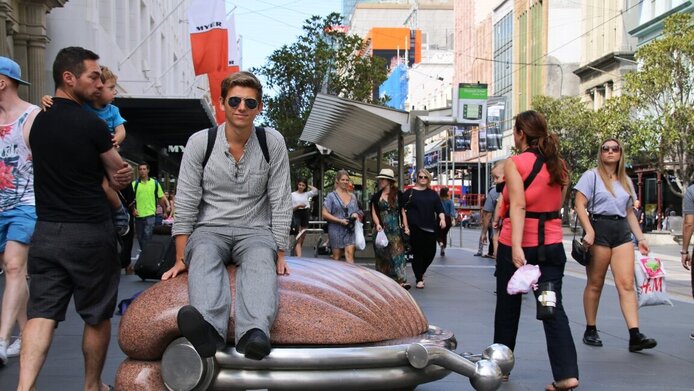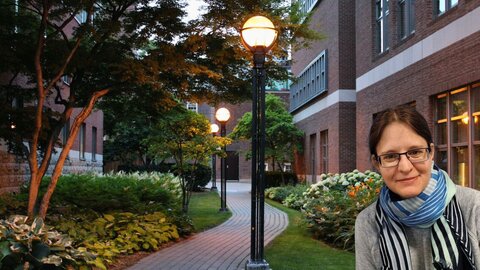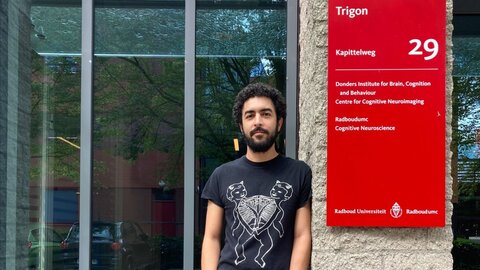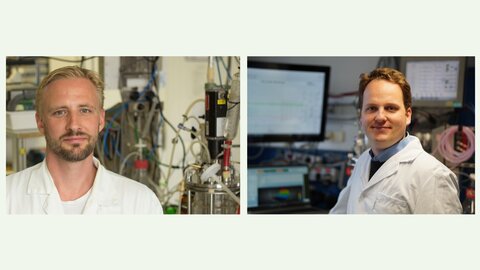Science Culture Down Under

By combining earth and material sciences, the methods and working approach of mineralogists are very application-oriented and interdisciplinary. I am currently a guest researcher at the materials engineering branch of ANSTO – the Australian Nuclear Science and Technology Organisation. I am looking into a clever strategy for “converting” nuclear wastes into a form that is as safe and stable as it can possibly be. Proposed back in the 1980s by the Australian geoscientist A. E. Ringwood, the so-called SYNROC concept is based on fusing highly radioactive wastes stemming from the civil use of nuclear energy or dismantled nuclear weapons - i.e. long-lived high-level radionuclides – into the crystal structure of mineral phases. By this means, final geological disposal of waste materials would be much safer since they are thereby enclosed in a kind of synthetic rock and protected by appropriate additional technical barriers such as packaging and shielding. The advantage over the preferred European strategy of vitrification (encapsulation in glass of highly radioactive substances filled into steel containers) is a higher level of resistance - higher by several orders of magnitude – to permeation by groundwater or, in the worst case, phase conversion processes which foster leakage of dangerous, radioactive substances due to higher temperatures caused by residual heat radiation.
Developing solutions together
My on-site research benefits greatly from cooperation between disciplines and their different spans of experience. As geoscientists we provide insights into durability over geologically protracted periods by characterising partly identical, natural analogue phases. This long-term view is essential, given the long-lived nature of some radioactive nuclides. Material scientists, on the other hand, use analogue experiments – such as the radiation experiments at particle accelerators made available to me – to simulate the impact of radioactive decay processes on the mineral phases investigated. Bringing these two elements together is a central part of my work here in Australia.
Optimisation pressure – what the future may hold
Beyond the scientific benefits, experiencing first-hand the particularities of a country is one of the greatest advantages that a longer stay abroad offers as compared to just short trips, such as visits to labs or attending conferences. Especially for young scientists such as myself, this opens up a different perspective on one’s own research and makes it possible to test alternative working methods and environments. That said, being part of the scientific community of another country for a protracted time not only points up the positive aspects, but also the downsides. One example is to be found in the difficulties for starting cooperative projects with other colleagues at universities. In many departments, the use of university laboratories is subject to charge-back regimes and accompanied by administrative hurdles, which makes it difficult for university staff to use devices and measuring facilities at their own university without finding third-party funds. I have also witnessed sudden cuts of 40 percent in the annual budget for active doctoral students at a university. This makes it impossible for the students to pursue their research projects, although the necessary instruments would be available in their departments, because their supervisors simply lack the required financial resources. While these management optimising systems, often taken over from the business world, may be useful for “stewardship” of university budgets – although they come with substantial administrative burdens – it is my experience here in Down Under that they inhibit the spontaneity and flexibility of scientists and keep them from testing new ideas and developing lab and technology skills.
Developing alternatives
Highly motivated scholars and students, already burdened anyway by the pressure to publish, are thereby put under additional strain and confronted with internal competition that may be detrimental to the working atmosphere. This is very much in contrast with the situation as I found it at the public research institution here in Sydney, which is not a university, or during my own doctoral studies at the University of Vienna. Unfortunately, developments at Anglo-Saxon universities – which must be viewed critically – are now also spreading all over Europe with a certain time lag. I would therefore plead for working out alternative management concepts that do not make the real work of scientists and students even harder – otherwise we may well be confronted soon with a similar state of affairs at our universities.





